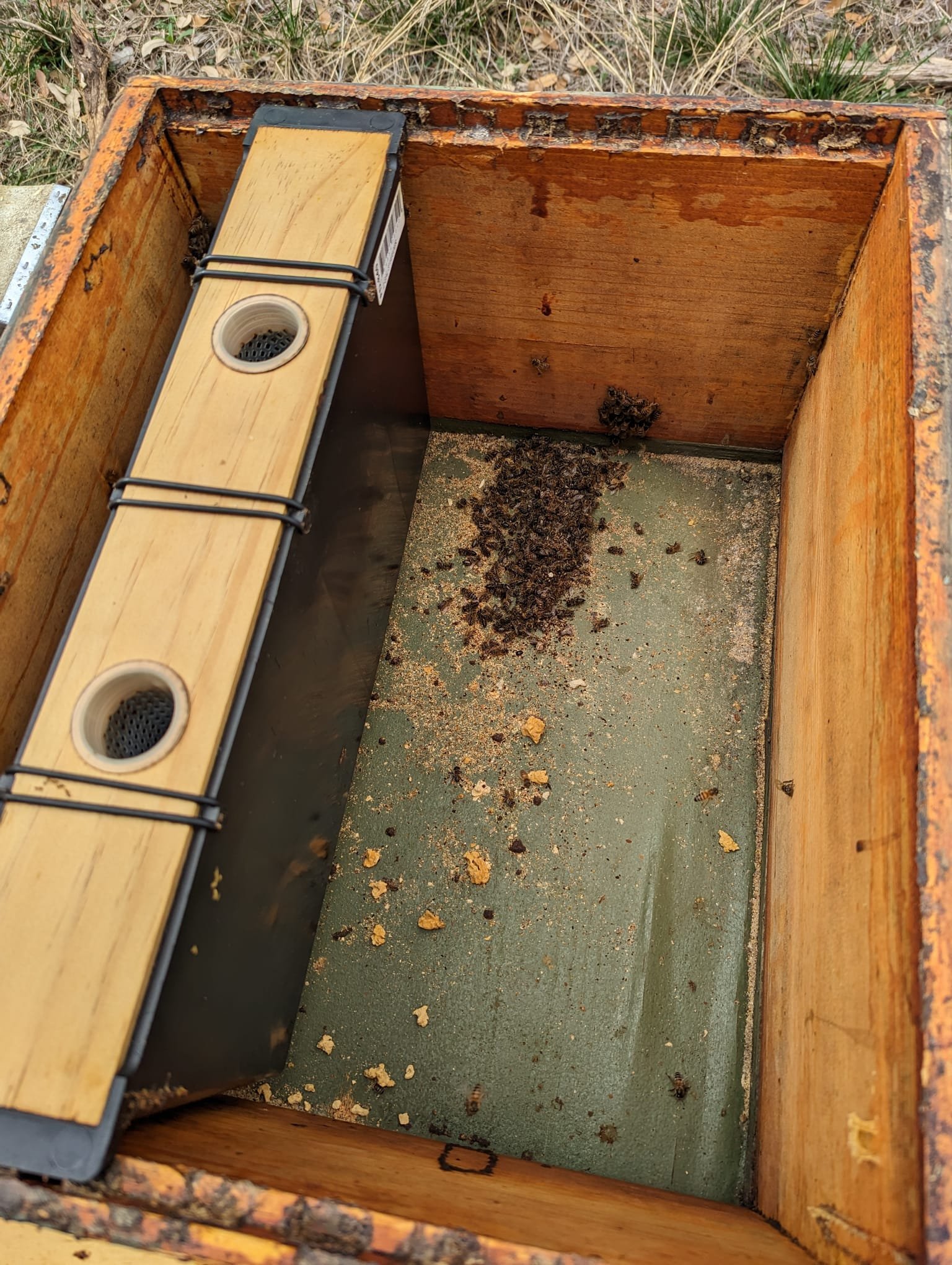Mid-winter Take Aways
Already by mid-winter, we have seen some losses in our apiaries. This is either due to the cold snap we had around Christmas or just plain starvation. And we're not out of the woods yet, with more potential cold snaps to come. It's always sad to see a hive loss whenever we do inspections. Here are some strategies we implement to better prepare and what to look for in this roller coaster of weather we have here, in central Texas.
Firstly, preparation starts well ahead of wintertime- soon after the honey harvest. Different regions have different climates. What works in the northern states does not necessarily work in the south. While our temperate weather is in our favor, we have more time to prepare before getting into freezing temperatures.
To begin, we want to test mite levels before the cold weather season. Colonies should be below the economic threshold, which means less than 3% mite sample. If there is a 3% or higher mite population, immediate pest management is required.
Another important step is weatherization. We place entrance reducers on the entrances of all of our hives, blocking cold air and allowing bees just enough aperture to enter/exit. We also check our equipment for any cracks and wear that would allow cold air to seep in - migratory lids and bottoms boards. We replace any damaged equipment. If you are in a pinch, you may use duct tape to cover cracks or address leaks from bowed migratory covers. Meanwhile, the honey bees will make their own weatherization, sealing cracks and gaps in the box and at the entrance with their propolis.
Second, as we get closer to the fall season, we'll start supplemental feeding our colonies making sure each hive has adequate resources for their consumption. We provide sugar-syrup and pollen patties. Reference here on bee nutrition. Around January we do another check to make sure our hives have not used up all of the stored resources. In this case we'll start with supplemental feeding again.
Sometimes honey bee colonies have plenty of honey but still starve. They are too weak and few in number to access the food stores in freezing weather. They want to remain in their cluster to preserve heat. This photo shows starved bees clinging in their honey comb, too cold to get their food.
This is where managing weak colonies comes in. You can combine the two weak colonies together in one hive box and let themselves work out which queen prevails. One strong colony going into winter has better survival chances than two weak colonies. Another option is to piggyback a weak colony on top of a strong colony with a double-screen division board that will allow the heat from the strong colony to rise up and help out the weak colony keep warm in the cold weather. There are other variations of these methods as well.
Sadly, hives losses are just a part of beekeeping. Some are expected, others are not, but it’s always a troubling sight. Overall, it is always a good idea to be proactive and stay ahead of the weather, rather than reactive with your bees. Reach out to us with your questions.


